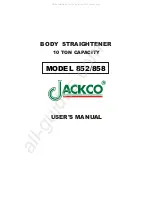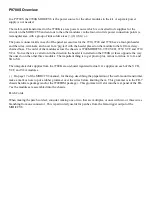
MAC215986
472
Revision A
4.16.3
Checking Tire Pressure
Proper tire pressure ensures tires perform properly and wear evenly.
1000020
Figure 4.394: Inflation Warning
WARNING
•
A tire can explode during inflation, which could cause
serious injury or death.
•
Do NOT stand over tire. Use a clip-on chuck and
extension hose.
•
Do NOT exceed maximum inflation pressure indicated on
tire label or sidewall.
•
Replace tires that have defects.
•
Replace wheel rims that are cracked, worn, or severely
rusted.
•
Never weld a wheel rim.
•
Never use force on an inflated or partially inflated tire.
•
Make sure the tire is correctly seated before inflating to operating pressure.
•
If the tire is not correctly positioned on the rim or is overinflated, the tire bead can loosen on one side causing air to
escape at high speed and with great force. An air leak of this nature can thrust the tire in any direction endangering
anyone in the area.
•
Make sure all the air is removed from the tire before removing the tire from the rim.
•
Do NOT remove, install, or repair a tire on a rim unless you have the proper equipment and experience to perform
the job.
•
Take the tire and rim to a qualified tire repair shop.
1.
Check the tire pressure. For pressure specifications, refer to Table
.
2.
Make sure the tire is correctly seated on the rim before inflating.
a.
If the tire is not correctly positioned on the rim, take the tire to a qualified tire repair shop.
3.
If inflation is required, use a clip-on chuck and an extension hose to inflate the tire to the desired pressure.
IMPORTANT:
Do
NOT
exceed maximum inflation pressure indicated on tire label or sidewall.
Table 4.6 Tire Inflation Pressure
Size
Load Range
Pressure
225/75 R15
E
552 kPa (80 psi)
















































